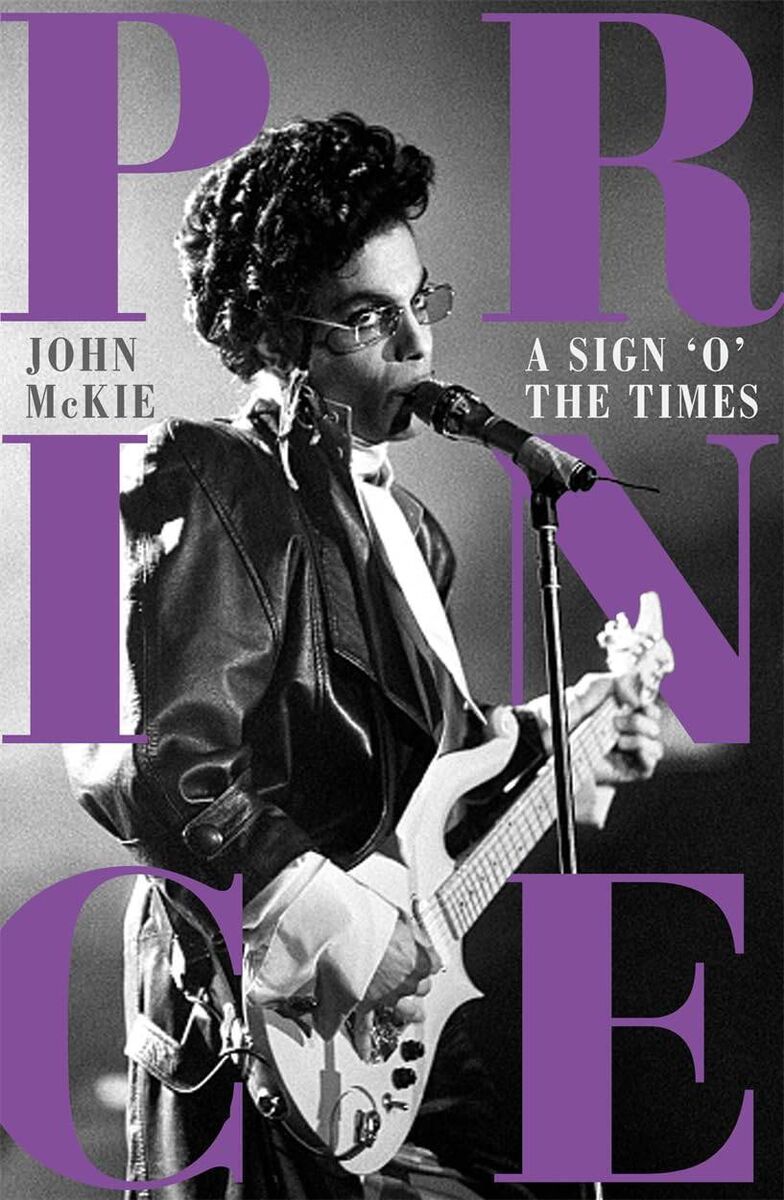Book review: Extensive portrait of a Prince of music invites questions

Prince performing at the halftime show at Super Bowl XLI in 2007 at Dolphin Stadium in Miami. Prince believed it was vital to look good to play good. File photo: AP/Chris O'Meara
- Prince: A Sign o’ the Times
- John McKie [Blink]
- Review: Colm O’Callaghan
Karl Douglas, a long-time member of Jimmy Fallon’s house band on his late-night US talk show, saw just how disdainful Prince could be during a television appearance in 2013.
Booked to perform a couple of live numbers on The Tonight Show, he borrowed a favourite guitar from Douglas, completed his set, and then promptly splintered the instrument on air. “Hurt people hurt people,” Douglas remarks to John McKie in recalling the episode here.
That cameo is one of the more throwaway lines in McKie’s fine overview of the life and work of Prince Rogers Nelson, a uniquely gifted writer, performer, and multi-instrumentalist who released the first of a 40-album canon in 1978. But when compiled alongside the many other such yarns scattered like random runes throughout, it carries a weighty rock biography into far more disconcerting territory.
Prince bestrode popular culture during the late 20th century and his legacy extends far beyond his considerable mainstream commercial success. But little of substance is known of a man whose appetite for work is matched only by an overblown sense of his own creative importance and a coquettishness often excused as enigma.
Compiled from the testimonies of over 200 of those who worked with and for Prince during a prolific career, McKie uses the period around the release of the magnificent Sign o’ the Times double album in 1987 as his narrative peg. But even after over 500 pages, A Sign o’ the Times begs far more questions than it answers.
In its form and shape, the book is an examination of Prince’s key relationships, which, in order, were with music, women, and God.
McKie goes in deep and at no little length. He tracks down the director of the Sign o’ the Times video, Bill Konersman, to his current place of work: The US Ministry of Defence at Arlington, where he now works on a training simulator for the US Air Force. In another memorable sequence, he cites those who built and designed a full-sized windmill in Prince’s front garden.
But these are outliers. Most of the primary sources here are as you’d expect: Musicians, studio technicians, and domestic staff, a cohort Prince went through in swathes. “Labour laws,” says Chris Jones, who worked briefly with him as an engineer during his final years, “let’s just say they didn’t apply”.

Notwithstanding his philanthropy — most of which only became known following his death in 2016 — Prince was never regarded as a benevolent employer. “Some of his closest musical lieutenants,” concludes McKie, “considered him less than generous in payment for their services.”
Others disputed writing credits with him and he routinely dismissed his management, financial, and legal advisers.
Evaluating Prince’s critical impact, McKie presents him alongside Madonna and Michael Jackson as “three 1958-born Mid-West Comets”.
Born within months of each other in America’s heartland, all three helped determine the shape of popular music during the first flushes of the music video age in the early 1980s. All of them also toyed incessantly with image, identity, and sexuality.
Prince believed it was vital to look good to play good — one former partner reveals he also consistently smelled good — and the book is rich with anecdotes from designers, hair-stylists, and even those who custom-made his shoes.
One apocryphal yarn suggests that he once stood down live shows at Wembley Stadium because of the likely impact of inclement weather on his hair.
Born to two musicians and raised in a complicated domestic set-up, Prince signed to a major record label as a teenager and, from the get-go, worked fanatically and impulsively. Influenced by a wide range of styles and sounds, he was indulged immediately by his paymasters at Warner Brothers and afforded an artistic freedom to create enjoyed by few either before or after him.
That licence was both the making and undoing of him: His canon is pock-marked by creative over-indulgence. As early as the release of his Purple Rain album in 1984 — accompanied by the first of four Prince films — he was already, at just 26 years of age, a profoundly autocratic presence.
That Prince was a unique talent goes without saying: It’s just that too much of his material is inconsistent and lumpy. A gifted instrumentalist and a highly technical player, he is compared in one irony-free sequence here to Mozart. Prince, it’s fair to say, brooked little by way of dissent and didn’t wear rejection lightly, either in studio or outside of it.
A serial philanderer
In the early 1990s, Carole Davis, a model and aspiring songwriter, was flown to Prince’s home on the pretext that he wanted to hear her sing. But, she tells McKie, she quickly “realised he was auditioning for a girlfriend as he was asking me very personal questions. He became very angry… when I told him I didn’t believe in Jesus.”
Robin Power Royal, who first encountered Prince at a live show when she was aged 17, tells McKie that “Prince was a child of God but still a man who had a lot of power over women and frequently wielded that power for his own pleasures”.
Bevla Reeves, another of his production crew, claims: “He was exploring Jehovah’s Witnesses and that was in conflict with what we knew him to be with all the women around.”
In the early 1990s, he very publicly two-timed Carmen Electra [who he had re-named, a recurring theme with several of his partners] with Mayte Garcia, who later became his first wife. For someone who was so insistent on loyalty from his staff, he was a serial philanderer, concerned with infidelity only when he was on the receiving end.
Robin Power Royal tells McKie that although Prince believed in God, “he was not a faithful Christian. Prince was a faithful soul until he wasn’t”.
In her memoir, Rememberings, published in 2021, Sinéad O’Connor — who rose to global fame on the back of a Prince song, Nothing Compares 2 U — recalled an incident at his home in which she claimed he assaulted her. She described him as a “serial abuser of women”.
Although there is nothing overt in the numerous testimonies here to support that claim, a number of McKie’s contributors have clearly been left unsettled by their experiences with Prince. The author charitably refers to his subject as being “inconsiderate to women”.
There’s enough cordite in the air here to suggest that Prince showed far less respect to the many women in his life as he did to both his music and his God.

Subscribe to access all of the Irish Examiner.
Try unlimited access from only €1.50 a week
Already a subscriber? Sign in
BOOKS & MORE
Check out our Books Hub where you will find the latest news, reviews, features, opinions and analysis on all things books from the Irish Examiner's team of specialist writers, columnists and contributors.






